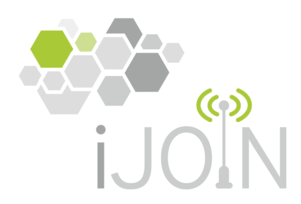IMDEA Networks

iJOIN project speeds up mobile traffic
14 September 2015

Researchers from IMDEA Networks Institute have designed a new cloud infrastructure that shall take mobile traffic volume to new heights and is already setting the pace for further advances on the development of future 5G networks.
European researchers in the field of ICT are tackling the challenging task of creating viable models to deal with the incremental requirements for speed, capacity and traffic volume of mobile networks worldwide. A significant advance in this area has just been provided by the EU collaborative research project iJOIN*, coordinated by IMDEA Networks. Dr. Albert Banchs, Deputy Director of the Madrid research Institute was the Principal Investigator. The project, which has recently concluded, has been evaluated by the European Commission with the highest grade. According to the EC iJOIN has made “excellent progress”, “has fully achieved its objectives and technical goals for the period and has even exceeded expectations”.
The iJOIN technology takes broadband wireless access networks to a new dimension in that it leaves behind the common concept of logical mobile networks and instead works on the basis of a joint design. The best way to meet future expectations in throughput is spatial reuse based on dense, low-power, small-cell networks. The primary problem with this solution, apart from the need for a high degree of coordination is, however, the need for a shared IT platform (cloud computing) to connect small-cells and the core network. iJOIN has been able to provide precisely this.
In this sense, iJOIN has placed itself at the forefront of European wireless research, and its technology is now considered a key enabler for 5G, the next (and fifth) generation of mobile networks. Other projects under the European Commission’s 5G-PPP (Public Private Partnership) are in fact interested in using the iJOIN results as the basis for future designs of 5G mobile network architectures.
At the forefront of European wireless research
The joint design developed by the iJOIN research team became feasible thanks to the novel concept of RAN-as-a-Service (RANaaS), allowing a flexible functionality based on a cloud infrastructure. RANaaS is, in other words, allowing the important link between RAN technologies and their execution in data centers using commodity data. And as the name implies, the purpose of the iJOIN project was to pave the way for an exceptionally greater traffic volume by creating a joint design and, at the same time, ensuring optimization of access and backhaul, operation and management algorithms, and architectural elements, integrating small-cells, heterogeneous backhaul and centralized processing.
The application of iJOIN technology has proven to improve area throughput considerably (60-130% improvement, depending on the scenario). To take an example, at peak hours when many users connect to a mobile network, and a decline in speed and processing of data would be the norm, iJOIN technology ensures better throughput. As for energy efficiency, iJOIN technology reduces energy consumption to less than 10% of what is the usual system consumption. In terms of cost efficiency, the analysis results show that iJOIN technologies can lead to a reduction of 25% in required capital expenditures on small cell implementation compared to conventional cellular technology investments. Last, but not least, the utilization-efficiency is shown to be up to 90% in RAN, backhaul network and RANaaS when using iJOIN technology.
The iJOIN project results have been published in publications in top conferences and journals. Also, the outcome of the project has served as key contributions to standardization bodies, several patents have been obtained, and the project has played an important role in scientific and industrial workshops as well as participating in concertation activities, i.e. collaborating with other projects within the EU such as TROPIC, METIS, CROWD, Mobile Cloud Networking (MCC) and HARP (among others).
As the iJOIN project has fully demonstrated, IMDEA Networks is one of the main leaders at European level in the field of 5G networks. Other 5G research projects carried out by the Madrid Institute are the ongoing SEARCHLIGHT, TIGRE-CM and CLOUD4BIGDATA, and the recently concluded CROWD.
iJOIN run from November 2012 to April 2015 and it was funded by the European Union under the ICT Program H2020. In 2013 the project won a Runner-up Award to the Best European Cooperative R&D Project 2013 in the Ninth madri+d Awards.
*Interworking and JOINt Design of an Open Access and Backhaul Network Architecture for Small Cells based on Cloud Networks.
Resources:
Carlos Jesús Bernardos, Antonio De la Oliva, Pablo Serrano, Albert Banchs, Luis M. Contreras, Hao Jin, Juan Carlos Zúñiga (June 2014)
An Architecture for Software Defined Wireless Networking (PDF 287Kb  )
)
IEEE Wireless Communications Magazine, 21 (3). pp. 52-61. ISSN 1536-1284


Recent Comments